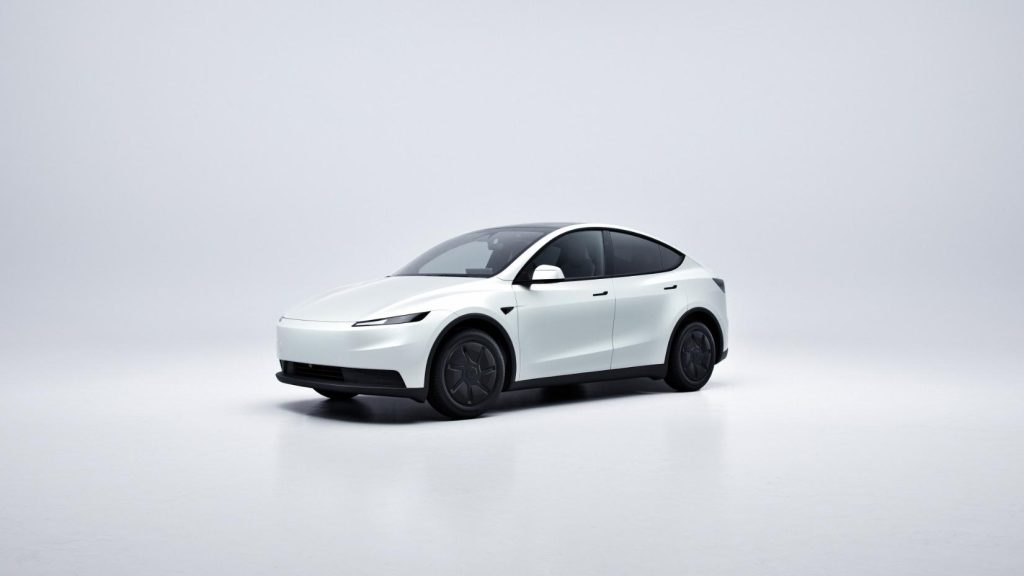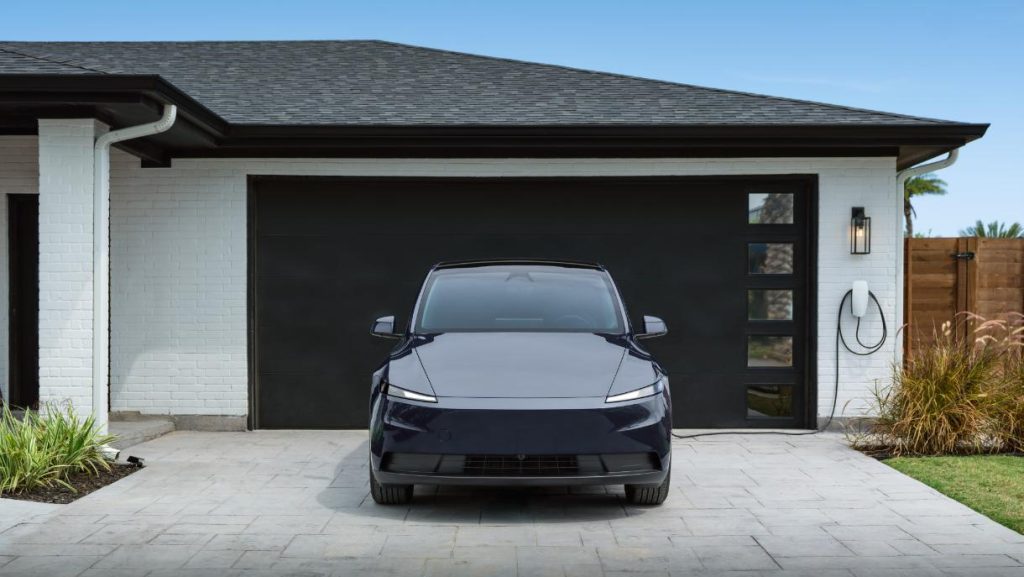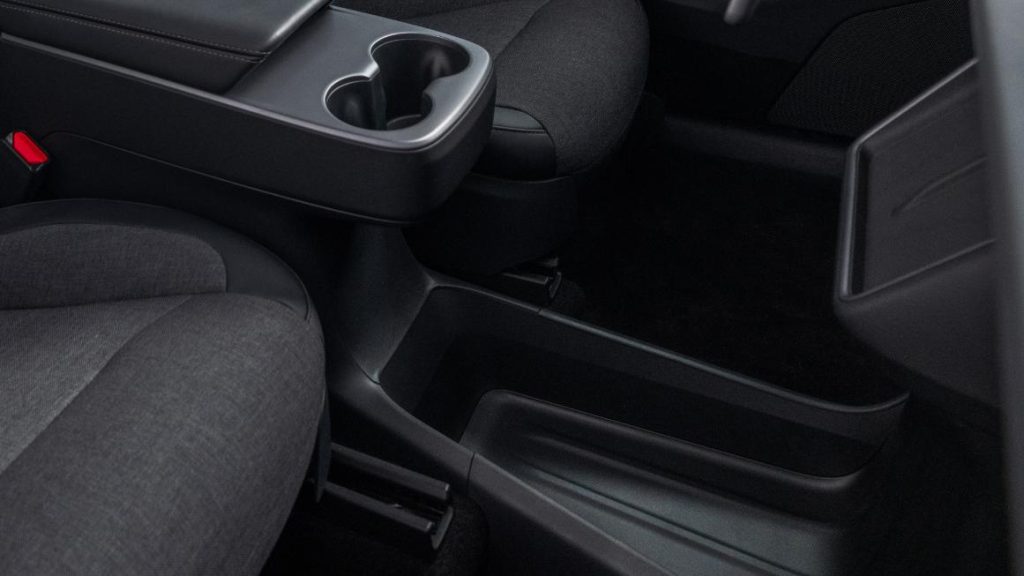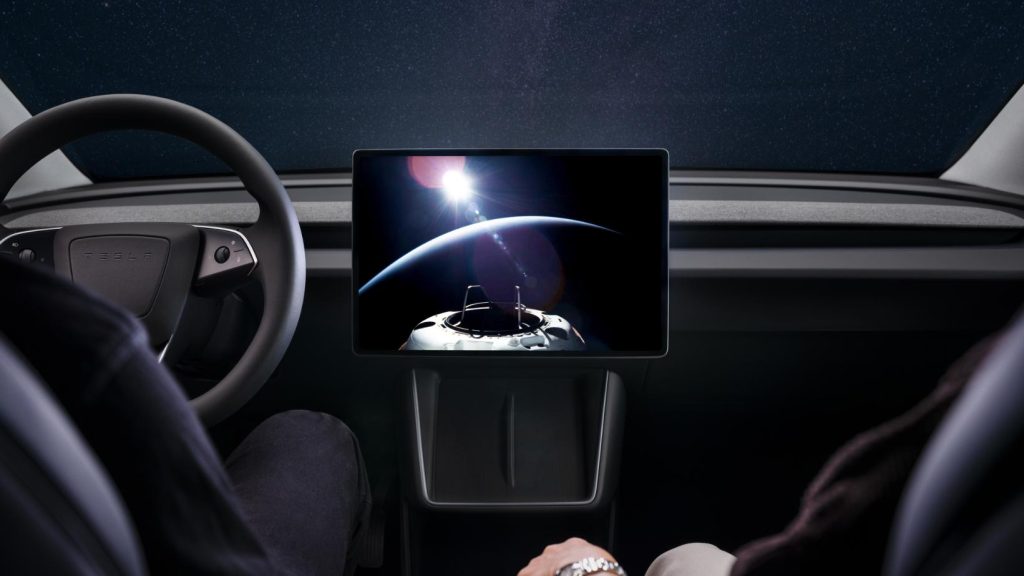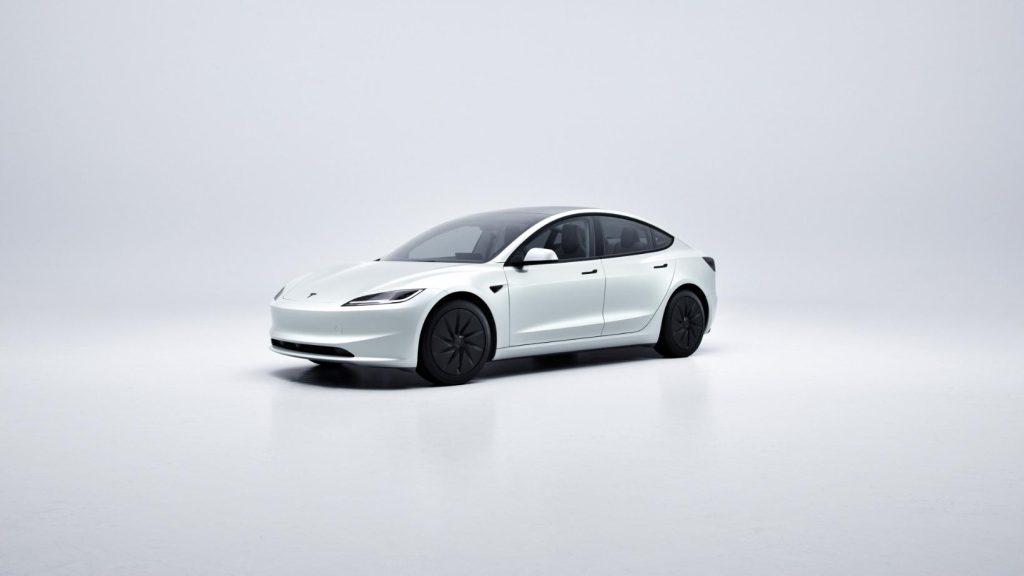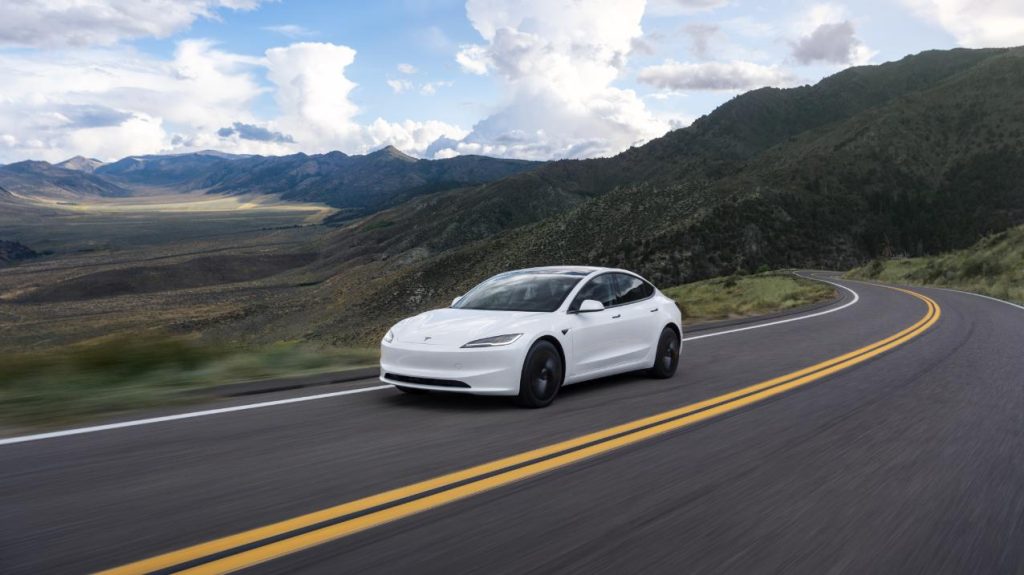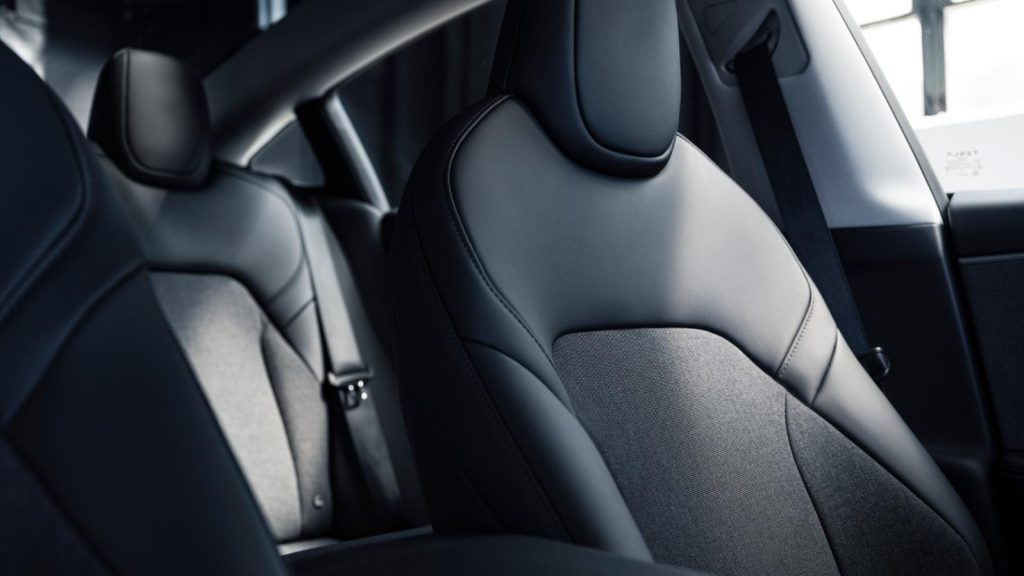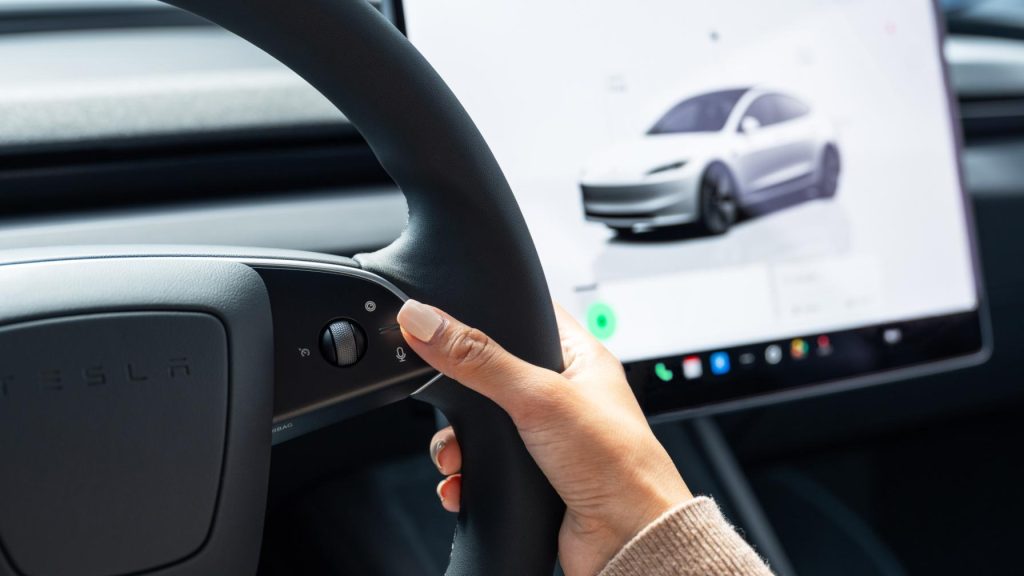News
Tesla releases Master Plan, Part Deux
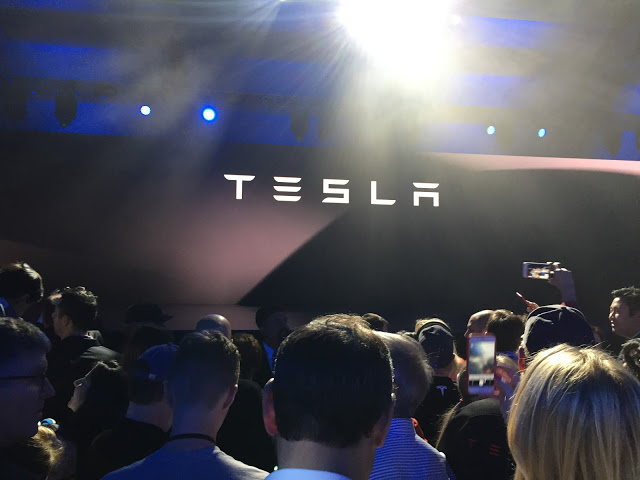
Nearly a decade after Elon Musk penned Tesla’s first Secret Master Plan, the sleepless CEO has released Part Deux of its plans for world change by creating a means for sustainable transportation and storage systems for renewable energy. Except this one isn’t so secret anymore.
Extending upon the company’s original 5-step plan to,
- Build a sports car
- Use that money to build an affordable car
- Use that money to build an even more affordable car
- Provide zero emission electric power generation options
- Don’t tell anyone about the plan
the new Master Plan largely boils down to an expansion of its fleet of vehicles to cover all segments, combining Tesla with SolarCity and creating a ride sharing service.
The plan calls for:
- Create stunning solar roofs with seamlessly integrated battery storage
- Expand the electric vehicle product line to address all major segments
- Develop a self-driving capability that is 10X safer than manual via massive fleet learning
- Enable your car to make money for you when you aren’t using it
Tesla Master Plan, Part Deux
The first master plan that I wrote 10 years ago is now in the final stages of completion. It wasn’t all that complicated and basically consisted of:
- Create a low volume car, which would necessarily be expensive
- Use that money to develop a medium volume car at a lower price
- Use that money to create an affordable, high volume car
And… - Provide solar power. No kidding, this has literally been on our website for 10 years.
The reason we had to start off with step 1 was that it was all I could afford to do with what I made from PayPal. I thought our chances of success were so low that I didn’t want to risk anyone’s funds in the beginning but my own. The list of successful car company startups is short. As of 2016, the number of American car companies that haven’t gone bankrupt is a grand total of two: Ford and Tesla. Starting a car company is idiotic and an electric car company is idiocy squared.
Also, a low volume car means a much smaller, simpler factory, albeit with most things done by hand. Without economies of scale, anything we built would be expensive, whether it was an economy sedan or a sports car. While at least some people would be prepared to pay a high price for a sports car, no one was going to pay $100k for an electric Honda Civic, no matter how cool it looked.
Part of the reason I wrote the first master plan was to defend against the inevitable attacks Tesla would face accusing us of just caring about making cars for rich people, implying that we felt there was a shortage of sports car companies or some other bizarre rationale. Unfortunately, the blog didn’t stop countless attack articles on exactly these grounds, so it pretty much completely failed that objective.
However, the main reason was to explain how our actions fit into a larger picture, so that they would seem less random. The point of all this was, and remains, accelerating the advent of sustainable energy, so that we can imagine far into the future and life is still good. That’s what “sustainable” means. It’s not some silly, hippy thing — it matters for everyone.
By definition, we must at some point achieve a sustainable energy economy or we will run out of fossil fuels to burn and civilization will collapse. Given that we must get off fossil fuels anyway and that virtually all scientists agree that dramatically increasing atmospheric and oceanic carbon levels is insane, the faster we achieve sustainability, the better.
Here is what we plan to do to make that day come sooner:
Integrate Energy Generation and Storage
Create a smoothly integrated and beautiful solar-roof-with-battery product that just works, empowering the individual as their own utility, and then scale that throughout the world. One ordering experience, one installation, one service contact, one phone app.
We can’t do this well if Tesla and SolarCity are different companies, which is why we need to combine and break down the barriers inherent to being separate companies. That they are separate at all, despite similar origins and pursuit of the same overarching goal of sustainable energy, is largely an accident of history. Now that Tesla is ready to scale Powerwall and SolarCity is ready to provide highly differentiated solar, the time has come to bring them together.
Expand to Cover the Major Forms of Terrestrial Transport
Today, Tesla addresses two relatively small segments of premium sedans and SUVs. With the Model 3, a future compact SUV and a new kind of pickup truck, we plan to address most of the consumer market. A lower cost vehicle than the Model 3 is unlikely to be necessary, because of the third part of the plan described below.
What really matters to accelerate a sustainable future is being able to scale up production volume as quickly as possible. That is why Tesla engineering has transitioned to focus heavily on designing the machine that makes the machine — turning the factory itself into a product. A first principles physics analysis of automotive production suggests that somewhere between a 5 to 10 fold improvement is achievable by version 3 on a roughly 2 year iteration cycle. The first Model 3 factory machine should be thought of as version 0.5, with version 1.0 probably in 2018.
In addition to consumer vehicles, there are two other types of electric vehicle needed: heavy-duty trucks and high passenger-density urban transport. Both are in the early stages of development at Tesla and should be ready for unveiling next year. We believe the Tesla Semi will deliver a substantial reduction in the cost of cargo transport, while increasing safety and making it really fun to operate.
With the advent of autonomy, it will probably make sense to shrink the size of buses and transition the role of bus driver to that of fleet manager. Traffic congestion would improve due to increased passenger areal density by eliminating the center aisle and putting seats where there are currently entryways, and matching acceleration and braking to other vehicles, thus avoiding the inertial impedance to smooth traffic flow of traditional heavy buses. It would also take people all the way to their destination. Fixed summon buttons at existing bus stops would serve those who don’t have a phone. Design accommodates wheelchairs, strollers and bikes.
Autonomy
As the technology matures, all Tesla vehicles will have the hardware necessary to be fully self-driving with fail-operational capability, meaning that any given system in the car could break and your car will still drive itself safely. It is important to emphasize that refinement and validation of the software will take much longer than putting in place the cameras, radar, sonar and computing hardware.
Even once the software is highly refined and far better than the average human driver, there will still be a significant time gap, varying widely by jurisdiction, before true self-driving is approved by regulators. We expect that worldwide regulatory approval will require something on the order of 6 billion miles (10 billion km). Current fleet learning is happening at just over 3 million miles (5 million km) per day.
I should add a note here to explain why Tesla is deploying partial autonomy now, rather than waiting until some point in the future. The most important reason is that, when used correctly, it is already significantly safer than a person driving by themselves and it would therefore be morally reprehensible to delay release simply for fear of bad press or some mercantile calculation of legal liability.
According to the recently released 2015 NHTSA report, automotive fatalities increased by 8% to one death every 89 million miles. Autopilot miles will soon exceed twice that number and the system gets better every day. It would no more make sense to disable Tesla’s Autopilot, as some have called for, than it would to disable autopilot in aircraft, after which our system is named.
It is also important to explain why we refer to Autopilot as “beta”. This is not beta software in any normal sense of the word. Every release goes through extensive internal validation before it reaches any customers. It is called beta in order to decrease complacency and indicate that it will continue to improve (Autopilot is always off by default). Once we get to the point where Autopilot is approximately 10 times safer than the US vehicle average, the beta label will be removed.
Sharing
When true self-driving is approved by regulators, it will mean that you will be able to summon your Tesla from pretty much anywhere. Once it picks you up, you will be able to sleep, read or do anything else enroute to your destination.
You will also be able to add your car to the Tesla shared fleet just by tapping a button on the Tesla phone app and have it generate income for you while you’re at work or on vacation, significantly offsetting and at times potentially exceeding the monthly loan or lease cost. This dramatically lowers the true cost of ownership to the point where almost anyone could own a Tesla. Since most cars are only in use by their owner for 5% to 10% of the day, the fundamental economic utility of a true self-driving car is likely to be several times that of a car which is not.
In cities where demand exceeds the supply of customer-owned cars, Tesla will operate its own fleet, ensuring you can always hail a ride from us no matter where you are.
So, in short, Master Plan, Part Deux is:
Create stunning solar roofs with seamlessly integrated battery storage
Expand the electric vehicle product line to address all major segments
Develop a self-driving capability that is 10X safer than manual via massive fleet learning
Enable your car to make money for you when you aren’t using it
News
Tesla Cybertruck gets Full Self-Driving v14 release date, sort of
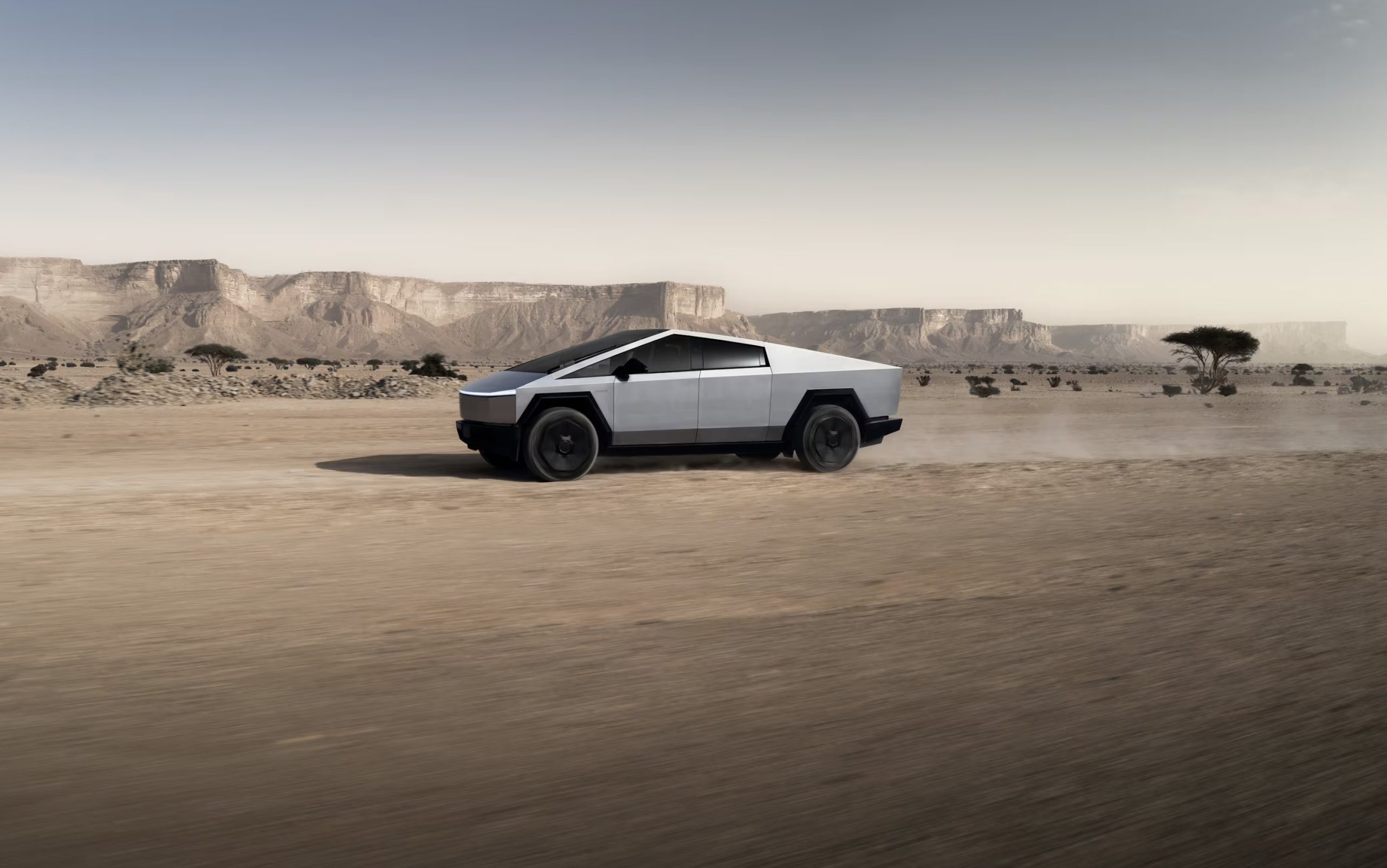
Tesla Cybertruck owners are wondering when they will get access to the company’s Full Self-Driving version 14.1 that rolled out to other owners today for the first time.
Cybertruck owners typically receive Full Self-Driving updates slightly later than other drivers, as the process for the all-electric pickup is different. It is a larger vehicle that requires some additional attention from Tesla before FSD versions are rolled out, so they will be slightly delayed. CEO Elon Musk said the all-wheel steering technically requires a bit more attention before rollout as well.
The all-wheel steering of Cybertruck requires a bit more Autopilot training
— Elon Musk (@elonmusk) October 7, 2025
After some owners got access to the v14.1 Full Self-Driving suite this morning, Cybertruck owners sought out a potential timeframe for when they would be able to experience things for themselves.
Tesla owners show off improvements with new Full Self-Driving v14 rollout
They were able to get an answer from Ashok Elluswamy, Tesla’s Head of AI, who said:
“We got you. Coming soon.”
We got you. Coming soon.
— Ashok Elluswamy (@aelluswamy) October 7, 2025
The release of FSD v14.1 for Cybertruck will not be tempered, either. Elluswamy then confirmed that Tesla would be rolling out the full-featured FSD v14 for the pickup, meaning it would be able to reverse and park itself, among other features.
Elluswamy said it would be capable of these features, which were void in other FSD releases for Cybertruck in the past.
Tesla’s rollout of FSD v14.1 brings several extremely notable changes and improvements to the suite, including more refined operation in parking garages, a new ability to choose parking preferences upon arriving at your destination, a new driving mode called “Sloth,” which is even more reserved than “Chill,” and general operational improvements.
Those who were lucky enough to receive the suite have already started showing off the improvements, and they definitely seem to be a step up from what v13’s more recent versions were capable of.
CEO Elon Musk called v14 “sentient” a few weeks back, and it seems that it is moving toward that. However, he did state that additional releases with more capabilities would be available in the coming weeks, but many owners are still waiting for this first version.
News
Tesla launches two new affordable models with ‘Standard’ Model 3, Y offerings
It is the first time Tesla has revealed any details about what it planned to launch in terms of its new, lower-cost vehicles, which are mainly aimed at countering the loss of the $7,500 EV tax credit.
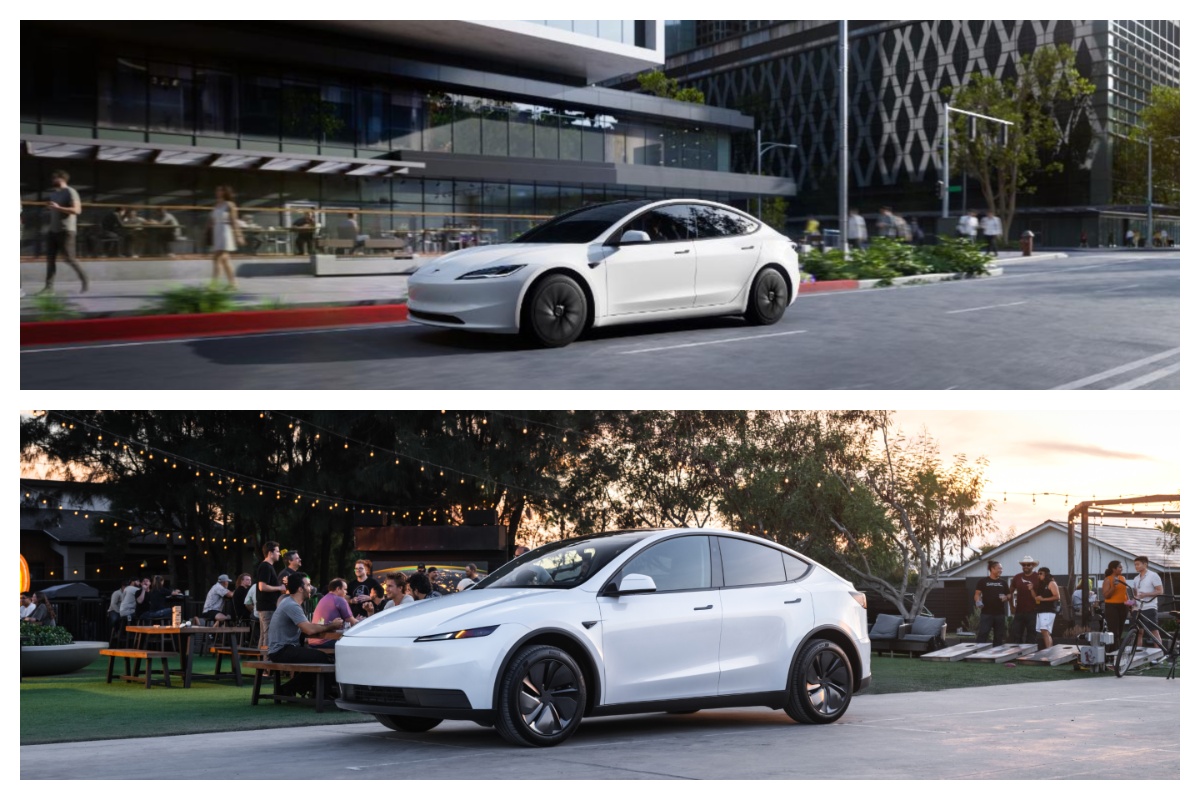
Tesla has officially launched its affordable models with the new Model 3 and Model Y ‘Standard’ versions hitting the company’s Online Design Studio on Tuesday.
It is the first time Tesla has revealed any details about what it planned to launch in terms of its new, lower-cost vehicles, which are mainly aimed at countering the loss of the $7,500 EV tax credit.
Here’s what Tesla went with for its release of the new affordable models.
Tesla Model Y ‘Standard’
The Model Y Standard is a stripped-down version of the all-electric crossover and starts at $39,990.
- Credit: Tesla
- Credit: Tesla
- Credit: Tesla
- Credit: Tesla
Deliveries are slated for November and December, the company says if you plan to order one, and it comes with a few major changes to improve efficiency and bring down cost for owners.
- New athletically tuned exterior and new alloy wheels to improve aerodynamics
- 15.4″ touchscreen in the front, the same as the other trims
- Available in three colors: Stealth Grey (free), White ($1,oo0 extra), Diamond Black ($1,500 extra)
- Textile and vegan leather interior
- Range sits at 321 miles
- New front fascia
- Covered glass roof (textile on inside)
- Windows are not acoustically laminated for a quieter cabin
- Manual mirrors and seats
- Smaller frunk
- No rear infotainment screen
- No basic Autopilot
- 69 kWh battery
- New 19″ Aperture wheels
- 0-60 MPH in 6.8 seconds
- 7 speaker stereo, down from 15 speakers in premium models
🚨 BREAKING: Tesla has launched the new Model Y ‘Standard’ for $39,990
Here’s what’s new: 🧵 pic.twitter.com/ILxbEsEniX
— TESLARATI (@Teslarati) October 7, 2025
Tesla Model 3 ‘Standard’
The Model 3 Standard was a surprise offering from Tesla, as many had only anticipated the company to refine and offer a more affordable version of the Model Y.
Coming in at $36,990, it features many of the same changes Tesla made with the Model Y “Standard,” all ways to improve price and make it less flashy than the more premium offerings.
Deliveries are also slated for November for this vehicle, and it features relatively the same stripped-down offerings as the Model Y Standard.
- Available in three colors: Stealth Grey (free), White ($1,oo0 extra), Diamond Black ($1,500 extra)
- Textile and vegan leather interior
- Range sits at 321 miles
- Covered glass roof (textile on inside)
- Manual mirrors and seats
- No rear infotainment screen
- No basic Autopilot
- 69 kWh battery
- New 19″ Aperture wheels
- 0-60 MPH in 6.8 seconds
- 7 speaker stereo, down from 15 speakers in premium models
@teslarati 🚨 Tesla’s Affordable Models are here! Let’s talk about them! #tesla #fyp #viral #teslaev #elonmusk ♬ Natural Emotions – Muspace Lofi
Elon Musk
Tesla owners show off improvements with new Full Self-Driving v14 rollout
Some of the big things that Tesla faced head-on with the development and release of v14 were navigating in parking garages and handling parking after arriving at a destination.
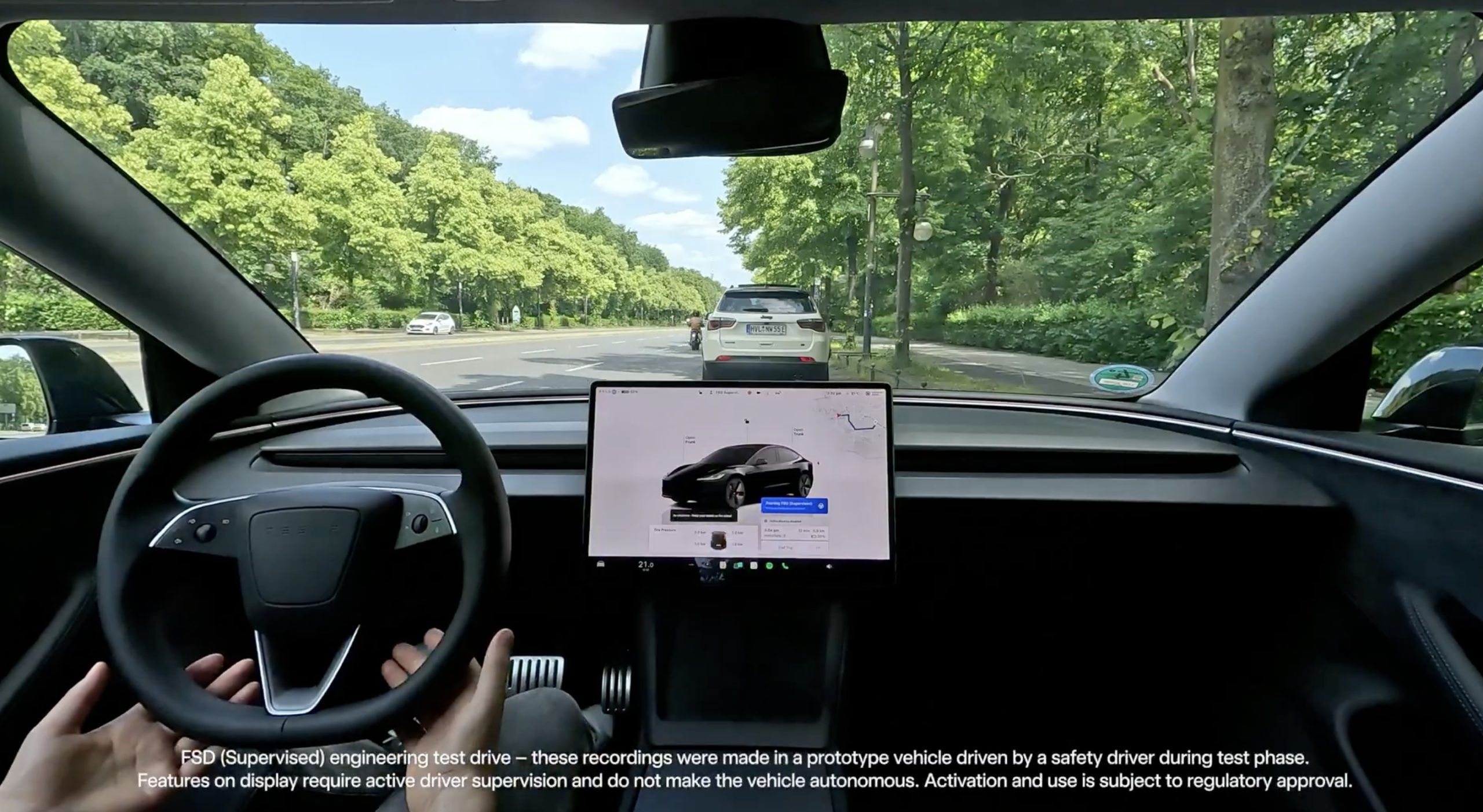
Tesla owners with access to the company’s Full Self-Driving new version, v14, which rolled out on Tuesday morning, are showcasing some of the very impressive improvements that have arrived.
CEO Elon Musk called v14 “sentient” a few weeks ahead of its rollout, claiming the newest iteration of the company’s Full Self-Driving platform would be the most accurate to date.
Tesla FSD (Supervised) V14.1 with Robotaxi-style dropoffs is here
It was obvious this narrative had Tesla owners keeping their expectations high, as there were very evidently things that needed to be improved upon that were present in v13. I wrote about several improvements I was hoping to see, and based on the release notes for v14, Tesla did have these things in the works already.
Some of the big things that Tesla faced head-on with the development and release of v14 were navigating in parking garages and handling parking after arriving at a destination.
Tesla said it was working to increase the capabilities of Summon within parking garages, as many owners believe that is where it would be the most beneficial.
While that does not appear to be part of this initial v14 rollout, it does seem Tesla is focused on improving the suite’s ability to navigate through these garages, including stopping for a ticket to enter the facility, finding a spot, and parking in an appropriate space.
It was evident this was a huge improvement based on one example from an owner who received v14:
FSD v14 navigates parking garages really well. Here’s a full clip of it leaving a parking spot, going through the garage, waiting for me to put the ticket in, and exiting.
Almost feels like it can read the signs above to go find the exit, with a complex garage here.@Tesla_AI pic.twitter.com/fv9j6LNcp6
— Zack (@BLKMDL3) October 7, 2025
If you look closely, you will even see the car shift slightly to the right when it arrives at the ticketing station, making it easier for the driver to hand over their ticket and payment. It then moves back out to the right when leaving to return to the center of the lane. It’s very intuitive.
Additionally, it appears to be more accurate when parking, thanks to improvements that enable owners to select the type of parking upon arrival at a destination.
In the v14.1 release notes, Tesla said that it has added “Arrival Options for you to select where FSD should park: in a Parking Lot, on the Street, in a Driveway, in a Parking Garage, or at the Curbside.”
One owner chose to navigate home and chose a garage to park in. Full Self-Driving performed it without any issues:
Not only can FSD 14.1 pull into my gravel driveway (no version before has done this) it can pull into the garage. pic.twitter.com/pweI5JKWHD
— Dirty Tesla (@DirtyTesLa) October 7, 2025
These are just two evident improvements so far, and there are likely many more on the way. The changes and fixes will be tracked by anyone with access to FSD v14 in the coming weeks.
-

 Elon Musk2 weeks ago
Elon Musk2 weeks agoTesla FSD V14 set for early wide release next week: Elon Musk
-
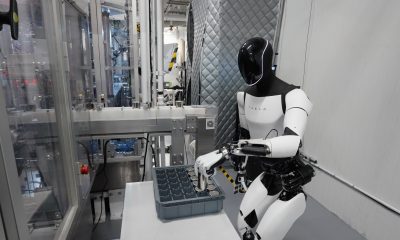
 News2 weeks ago
News2 weeks agoElon Musk gives update on Tesla Optimus progress
-
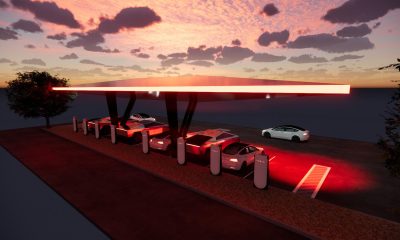
 News2 weeks ago
News2 weeks agoTesla has a new first with its Supercharger network
-
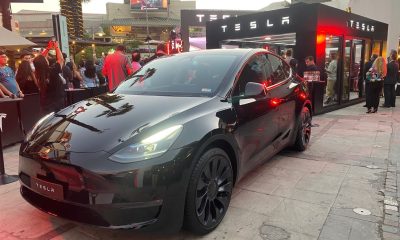
 News2 weeks ago
News2 weeks agoTesla job postings seem to show next surprise market entry
-
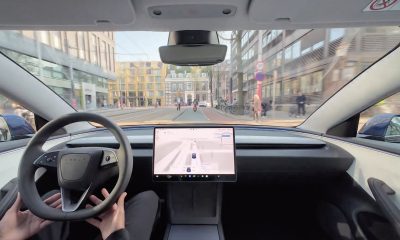
 Investor's Corner2 weeks ago
Investor's Corner2 weeks agoTesla gets new Street-high price target with high hopes for autonomy domination
-

 Lifestyle1 week ago
Lifestyle1 week ago500-mile test proves why Tesla Model Y still humiliates rivals in Europe
-
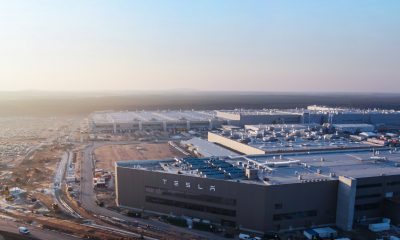
 News1 week ago
News1 week agoTesla Giga Berlin’s water consumption has achieved the unthinkable
-
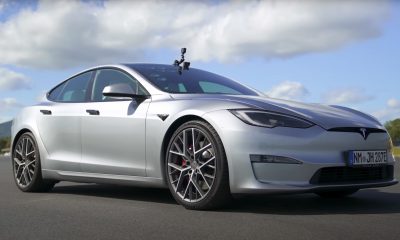
 Lifestyle1 week ago
Lifestyle1 week agoTesla Model S Plaid battles China’s 1500 hp monster Nurburgring monster, with surprising results


